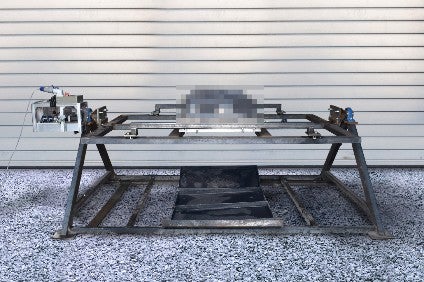
Millbrook, the English test centre, has opened a battery turnover facility to simulate rollover crash scenarios, continually improving the safety of electric vehicles.
The new facility will particularly help customers looking to test battery coolants, Millbrook said.

Discover B2B Marketing That Performs
Combine business intelligence and editorial excellence to reach engaged professionals across 36 leading media platforms.
It has a wealth of experience in vehicle rollover crash testing – simulating crash scenarios in which the vehicle is turned onto its side or roof and the proving ground claimed the world's first test suite for this type of test. The company is now applying its knowledge and expertise in this area to batteries.
A battery turnover test simulates a rollover crash scenario on an electric vehicle battery pack. This can be combined with a simulated or real coolant leak to test the impact of the battery coolant in this situation. This is important, as the most common coolant currently in use is a water/glycol mix, which both conducts and reacts with the electricity from the lithium ion cells within the battery.
The new facility is a result of the growing demand from the electric vehicle market for safer batteries as well as longer battery life and higher power output. Battery coolant systems will play a large part in achieving this, as they need to cool down the battery packs charged and discharged at higher rates.
The new facility can rotate a battery pack of up to 2x3x0.5m and a mass of up to 1,000kg. The rotational speed and profile (dwell times and positions) are all programmable with a typical speed of 90 degrees in two minutes. The facility can also be used for coolant flooding tests (to simulate an internal coolant leak within the battery pack) with a variable delivery rate. Any type of coolant can be tested. This facility is designed to withstand any potential outcome of the test.
Millbrook claims to offer the largest independent battery testing capability in the UK and regularly conducts testing on different battery chemistries and coolant types, from development samples to production.






